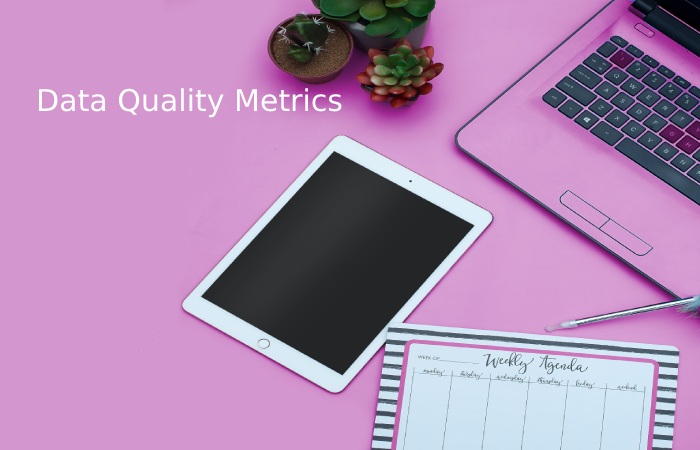Table of Contents
Data Quality
Companies can determine if their information is reliable and valid with a data quality assessment. If the data fails the check, management can improve the quality of its internal processes to improve accuracy, timeliness, and consistency. In addition, it allows companies to be informed by data, which improves decision-making.
What is Data Quality Assessment?
A data quality assessment (DQA) is a series of scientific and statistical evaluations that determine whether data meets a company’s quality standard. The standard may require a certain amount, type or format of data to carry out specific projects or processes. It can also involve a set of guidelines and tactics used to extract, cleanse, and apply information.
The goal of performing a DQA is to use business data to expose inefficiencies and issues within a process. Although empty data fields, inconsistent structures, and incorrect default values are often easy to identify, DQA aims to uncover the causes of more complex problems.
It allows companies to tailor their strategies to improve operational efficiency, maintain the integrity of internal systems, and maintain compliance.
Data Quality Metrics

Four metrics of data quality 1603214944 8070
Regardless of a company’s standards, DQA processes ensure the four essential elements of data quality-
Integrity
ensures that all relevant and necessary information is available in a data set. For example, if a retailer collects customer data, the retailer may require first and last names to populate a data set. Therefore, any document or application that includes one name without the other is consider incomplete.
The data integrity evaluation generates a percentage that determines how many records are consider complete. It allows the administration to fill in empty fields and improve the metrics.
Validity
it is consider valid if it meets the set of guidelines imposed for its dataset type. The rules usually include specific format, types and range.
For example, a phone number containing letters would not be considered valid. Therefore, numbers, like extensions, would have to be specially formatted to enter the system.
Again, validity is another metric display as a percentage to determine how many records in the system remain invalid.
Chance
refers to the most accurate and up-to-date information for a specific task. In other words, it determines whether the required data is available when requested.
For example, if a customer submits a change of address form, but the new address has not yet been submit to the system at the time the invoices are submit, this data set fails the timeliness assessment.
The timeliness metric measures the difference between when data is need and when it is readily available.
Consistency
A piece of data is consider consistent if all information representations are the same in all systems and databases.
For example, if date are enter using multiple formats in an organization, it is known as inconsistent data.
Steps of a Data Quality Assessment
A DQA can be tailor to fit any company’s set of standards. However, the assessment framework consists of six broad steps-
First, companies should set short-term and long-term goals for improving data quality, internal processes, and guidelines.
For example, companies seeking to ensure that their customer records contain accurate and consistent information should establish standards for verifying reference and personal information.
In this scenario, the stakeholders would be the finance, marketing, and manufacturing departments, which need access to accurate customer data. In addition, it affects internal processes such as order fulfillment, billing, and requests.
Evaluate Established Data Sources
Next, management must evaluate their existing data sets against the rules they established in the first step. This includes evaluating information across all internal systems for accuracy, completeness, consistency, validity, and timeliness.
Depending on the type of business and volume of data, management may need to conduct qualitative and quantitative assessments using various analytical tools. While the finance department can only handle quantitative data, such as billing, the marketing department can process reviews, ratings, and other qualitative information.
Companies should also follow these steps to assess their existing policies, such as data security, industry standards, and data access.
Analyze the Results of
The evaluation Once the evaluation is done, managers must analyze the results on several fronts. One way to study is to measure the gap between existing data and set business goals. Managers can also analyze data by identifying the root causes of poor quality data sets.
For example, if customer addresses are inconsistent across different systems, this may result from human error, poor integration, or inaccurate data.
Develop Improvement Methods
Based on the analysis, companies need to design and develop an action plan to improve the quality of their data. These plans should outline the necessary timelines, resources, and expenses.
Some companies may find that their software and applications need reprogramming, while others only need to manually change a few data sets.
Implement Solutions
When improvement plans are establish, companies can begin to implement solutions. Management must ensure that any technical changes to internal processes or procedures are note.
It includes developing an updated standard operating procedure (SOP) to ensure that all employees are adequately train and have reference resources.
Monitor The Data
Once improvements are implement, management should perform periodic checks to ensure that the data meets quality standards and works to achieve business goals.
Conclusion
Data quality refers to the development and implementation of activities that apply quality management techniques to data to ensure the data is fit to serve an organization’s specific needs in a particular context. Data deemed suitable for its intended purpose is consider high-quality data.

